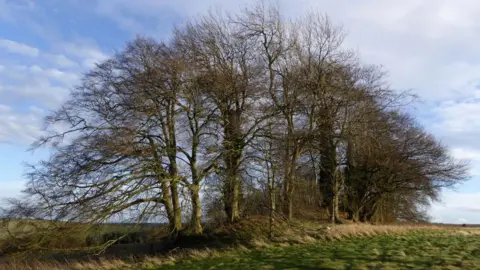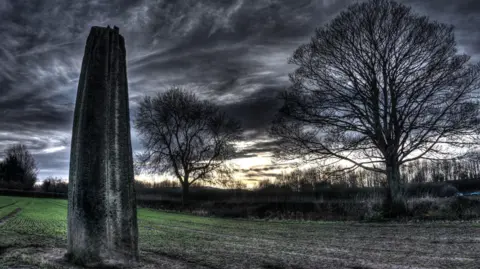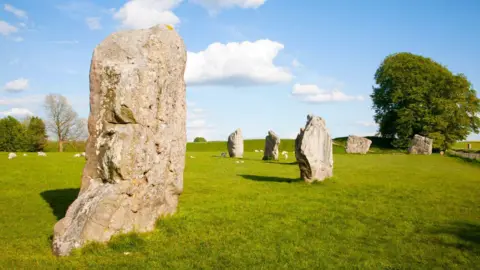ARTICLE AD BOX

 A Brookes/The Modern Antiquarian
A Brookes/The Modern Antiquarian
Thousands of ancient landmarks are on private land and can only be viewed from a distance or with the landowner's permission
Walkers and history-lovers have no easy way to visit more than a quarter of England's most ancient countryside landmarks because they are on private land with no legal rights of access, according to research by campaigners.
A report by the Right to Roam group has found that more than 5,500 lesser-known sites designated as Scheduled Monuments have no direct footpaths to them or are not on open access land.
The Stone Club, a group for neolithic stone enthusiasts, said its members often had to trespass to access sites.
Government advisors Historic England said landowners were not obliged to open such sites to the public, although many do give permission on a case-by-case basis.

 Getty Images
Getty Images
The survey did not include sites, like the Devil's Arrows stones in North Yorkshire, that could be easily viewed from nearby roads and footpaths

 Getty Images
Getty Images
The Avebury stone circles can be visited by the public and have legal rights of way very close by
While scheduling means a private landowner needs consent to carry out any works to a protected site, it does not affect their ownership nor give the general public any new rights of access beyond existing footpaths.
However, the owners of the East Kennett site told the BBC that they were happy for people to visit with permission, as safety was an issue when horse training took place nearby.
The owner of the Holne Chase site has been approached by the BBC for comment.
The countryside charity CPRE, formerly known as the Campaign to Protect Rural England, said it believed Right to Roam's estimate of sites without a legal right of access was "likely a significant underestimate".

 CLA
CLA
CLA president Victoria Vyvyan believes farmers should be funded to provide "controlled, guided" access
That, it said, was because the report excluded sites that may not have direct access but were within 20m of a road or footpath and could therefore be viewed from a distance, such as the Devil's Arrows stone circle in North Yorkshire.
CPRE president Mary-Ann Ochota said the public should have a legal right of "responsible access" to ancient landmarks as "peering over a fence isn't enough".
Meanwhile, the Country Land and Business Association (CLA), which represents rural landowners, said many of the sites identified "face constant threats - from motorbikes to metal detectors - and are too fragile to survive unchecked access".
"Open them up, and we could lose them forever," its president, Victoria Vyvyan, explained.
She called for more funding for farmers to provide "controlled, guided" access and to better protect scheduled monuments on their land.
'Celebrate history'
Right to Roam campaigner Amy-Jane Beer said ancient sites needed to be accessible as they "connect us with our past and enrich our experience of the countryside".
The group is calling for a change in the law to bring England in line with Scotland where, since 2003, there has existed a right of responsible access to most land.
Matthew Shaw, of the Stone Club, added: "Sites which are visited often have active groups caring for them - maintaining access, ensuring the stones are well looked after and liaising with the landowner."
A spokeswoman for the Department for Culture, Media and Sport (DCMS) said the purpose of scheduling monuments was to preserve them for future generations and does not create new rights of public access.
A Historic England spokesman added that it did not require landowners to open their sites to the public.
"While not all are publicly accessible, we can also celebrate a site's history through capturing and sharing information about it," he added.

 1 month ago
14
1 month ago
14








 English (US) ·
English (US) ·